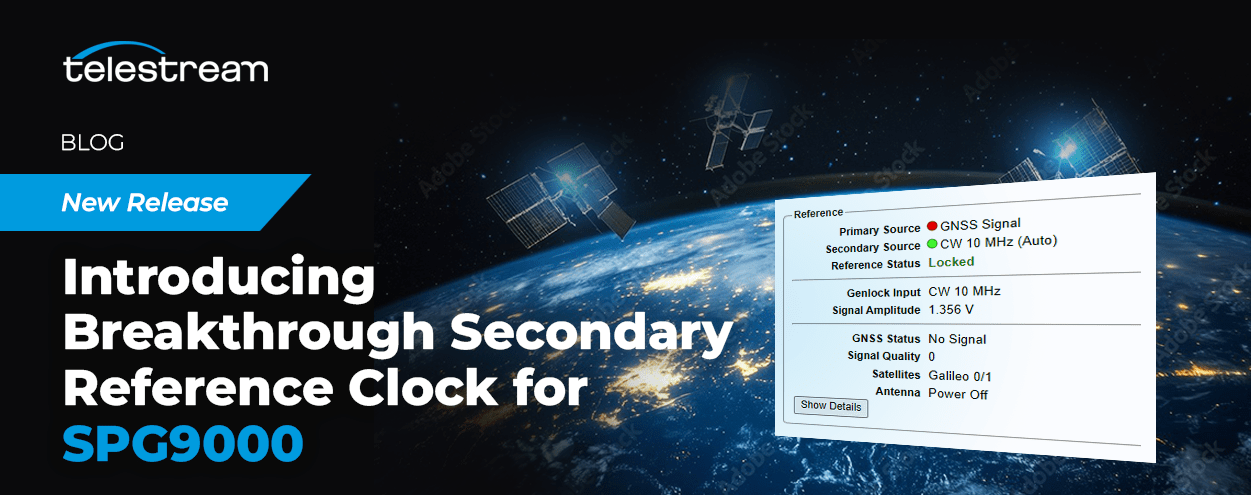The SPG9000 Timing and Reference System plays a critical role as the master clock for a broadcast facility. Typically, a GNSS signal is used for an accurate time-of-day and frequency reference. The SPG9000 then serves as a PTP grandmaster (leader) for ST 2110 networks and provides analog synchronization signals (NTSC, PAL, HD tri-level) for SDI devices.
However, the GNSS signal can occasionally suffer from disturbances, either from weather-related incidents or from malicious jamming or spoofing of the signal. For some operational environments, such as a mobile production truck that temporarily does not have a good view of the sky, the GNSS signal may be unreliable at that location.
In these instances, the SPG9000 will automatically switch its frequency reference from the external GNSS signal to its internal oscillator and the time-of-day will continue to count from the last known time from the GNSS receiver. This holdover mode will ensure that output synchronization signals will maintain their frequency and phase without any sudden “jam” or “shock”.
When the GNSS signal is restored, the SPG9000 will enter holdover recovery to eventually return to the correct frequency and phase. If the SPG9000 has been in holdover mode for an extended period, there will be some accumulated drift of the system clock from the real time-of-day. The SPG9000 is designed to remain in holdover recovery mode as long as necessary, by adjusting the clock frequency by no more than 0.2 ppm. This ensures that output NTSC or PAL signals have a frequency within SMPTE-specified limits (± 1 Hz), avoiding synchronization shock.

Reference behavior with primary GNSS reference source only
To minimize the clock drift in holdover mode, some of our users require a very high-precision oscillator, even better than the microelectromechanical system (MEMS) oscillator of the SPG9000. With the new secondary reference feature, they can use a 10 MHz continuous wave (CW) signal from an external rubidium or cesium atomic clock. The SPG9000 could remain synchronized for months until the GNSS signal returns.
For other use-cases with unreliable GNSS signals, the secondary reference can be set to a PTP follower from another PTP grandmaster. This mode is useful if there is a good network connection to a PTP GM that does have a good GNSS reference.
With the secondary reference mode enabled, the SPG9000 will not go into holdover mode unless both the primary (GNSS) and secondary (CW or PTP) signals fail. This provides a very high level of system reliability and resilience to GNSS outages.
The secondary reference can be selected automatically (upon GNSS signal failure), or the active reference can be manually selected to either the primary or secondary source. For example, the SPG9000 could start with a GNSS lock to get the time-of-day, then the secondary CW reference could be manually selected. Perhaps once every other month, the primary reference could be manually selected to re-synchronize the time before returning to the CW reference for continued operation.

Reference behavior with both primary and secondary reference sources enabled
Secondary reference is included with the GNSS licensed option and can be enabled by upgrading your SPG9000 to version 4.1. To download version 4.1 and review the Firmware Release Notes, including details on new customer-requested enhancements for SPG9000, visit the Software and Downloads section of our Resources page.
If you are interested in adding GNSS support to your SPG9000 or want to learn more about the SPG9000, please contact us.

